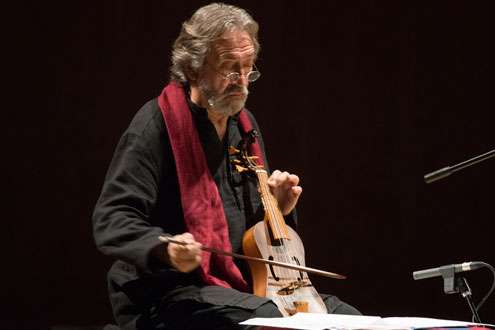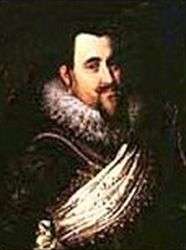|
Back
Unveiling the German Baroque New York
Met Museum
01/26/2013 - & January 27, 2013
Ludi Musici: The Development of Orchestral Music in Germany
Johann Hermann Schein: Venus Kränzlein – Banchetto Musicale (Sixth Suite)
William Brade: Dances from Turkey, Scotland, Satyr’s Dance etc
Samuel Scheidt: Ludi Musici
Johann Rosenmüller: Sonate da camera (Second sinfonia) – Sonata à 5
Juilliard 415, Jordi Savall (Viola da gamba/Director) 
J. Savall (© Stephanie Berger)
Jordi Savall is today the exemplification of so-called “early music”. Artist on all the viols from the 12th through the 18th Century, writer, conductor, master of Ancient World musics (Israeli, Spanish, Moorish, Arabic, Flemish etc etc) and a humanist who binds the world’s wounds showing how today’s warring states were once musical allies.
One of my own favorite figures of music, Mr. Savall is one of many luminaries working with Juilliard’s, “Juilliard415”, the school’s principal period-instrument ensemble. (The name is derived from the pitch of A for Baroque music.) Listening to the group in the Metropolitan Museum’s Spanish-Moorish Velez Blanco Patio, with sculptures and Andalucian balconies dating from the years of this music, was a special treat. The 20-odd animated members played their viols with different bowings, tootled their recorders, played an exceptional consort of percussion and–frequently from the balcony–resonated the trumpet and two sackbuts (the original trombone).
In this case, their music was, except to the specialist, one of the more ignored periods of music. We all know Late German Baroque, Late French Baroque (Couperin), early Italian (Monteverdi and Gesualdo), we all know Dowland and Palestrina.
But who except the scholar knows the “three Sch’s”? Scheidt, Schein, and Schutz? What present-day musician lauds Johann Rosenmüller, who brought Italian music to 17th Century Germany because he escaped a Nuremberg prison sentence for homosexuality and took refuge in Venice? And which Shakespearean scholar knows that an English composer who probably worked with the dramatist played variations in Germany on a tune by Shakespeare’s own favorite composer?
Well, I certainly didn’t. And while the music brought by his ensemble was equally surprising, it took some digging to find that the early German instrumental music was hardly limited to the society of the Court Electorate orchestras. One musician summed up the life of a German instrumentalist circa 1610 as basically that of a slave:
“With the court it is one day here, the next day off to someplace else. There is no difference made between day and night. Today one must perform at church, tomorrow at dinner, the next day at the theater...”
With all that–and a musical surprise mentioned below–this was a rousing concert. The sonatas and sinfonias were originally written for five or six instruments perhaps, but those half-dozen staves were only guidelines for the band leaders of the various German Electorates to show off all their musicians.
This was what Mr. Savall did. For some of the music, he was Principal Violist da Gamba, for others he was the most precise musician. In all, he really did show a kind of evolution of the music, which inevitably would lead to Bach and Handel and beyond.

S.Scheidt (© Allmusic.com)
It was Samuel Scheidt, for instance, who gave the concert name, “Ludi Musici” (Musical games), and his 1623 piece here, besides its Italian-style dances, brought forth what could be called a dissection and re-formation (for the Reformation Period?) of a song celebrating the Medieval hero, Roland. The song started with different lines, coalesced into a kind of tune and then played fascinating variations on that tune itself.
That sexual malefactor Mr. Rosenmüller, provided two works. One, written while he was hiding from the German Morals Police in Venice, was a simple chamber sonata, of the usual fast-slow-fast etc dance groups. When returning to Nuremberg, the music not only had a movement based on a canon, but a complete fugue for the whole orchestra as well. Of course organists were already doing this in 1682, but it was a surprise to hear an entire orchestra.

W. Brade (© Allmusic.com)
The most interesting composer of the German Renaissance was one William Brade, an English master violinist, an apparent genius of dance music, and a man with the most innovative orchestral colors.
Has first group of dances, in 1617, was a “courante Robert Johnson”, Johnson being the one composer we know of who wrote virtually all the incidental and song music from Shakespeare’s plays. The Bard had impeccable taste in matters musical, and Mr. Brade was obviously happy to bring his art to the staid Hamburg Court.
Most fascinating were more dances, which ended the program. Take the pizzicato. Both Groves and the Harvard Encyclopedia announce that Monteverdi “invented” the plucking of strings. But here, in a “Satyr’s Dance”, the full string section played pizzicato, lines, giving the lie to the scholars. He also had his own Scottish dance, with a bagpipe drone and a Scottish snap.
Mr. Savall’s many recordings, and his last appearance here, showed the glories of Spanish, Moorish and Italian music from the earliest time. Here, the dark string ensemble (including a theorbo), the brass from above, and a whole host of winds and drums, illuminated what had been a shadowy area of musical knowledge. I don’t expect to impress people with this esoterica, but it was a delight to understand the inventions and international creations which would later bloom into the music we so readily accept today.
Harry Rolnick
|